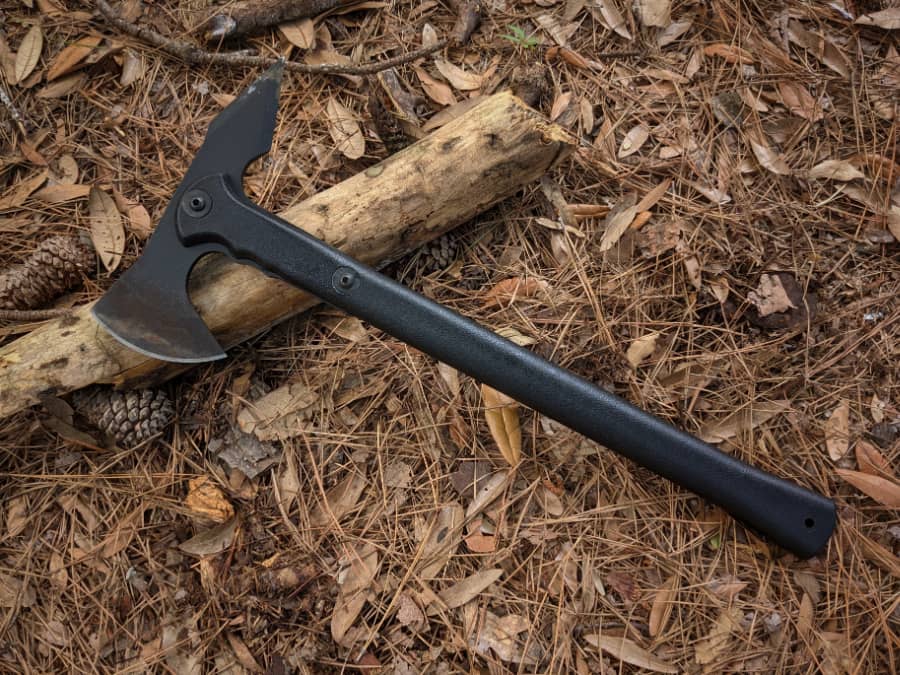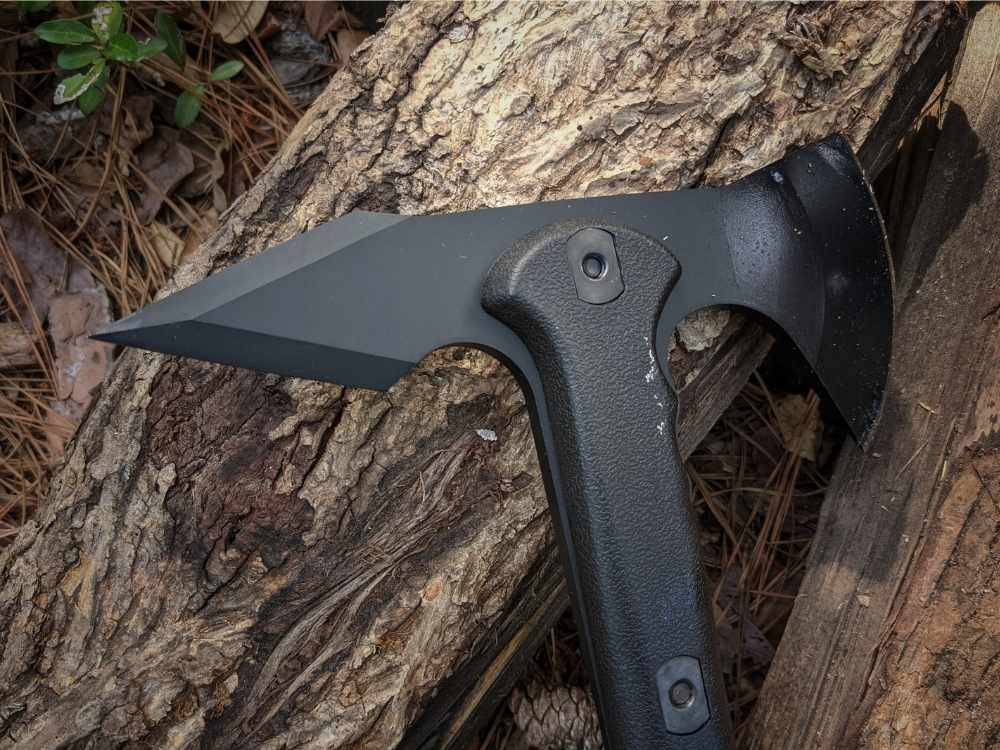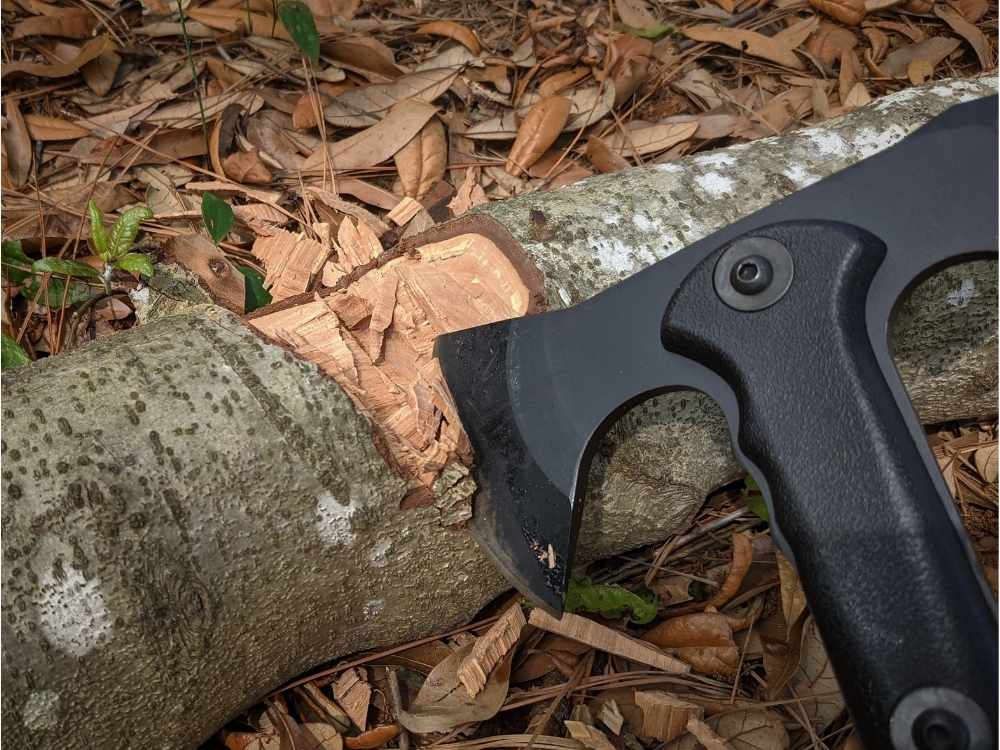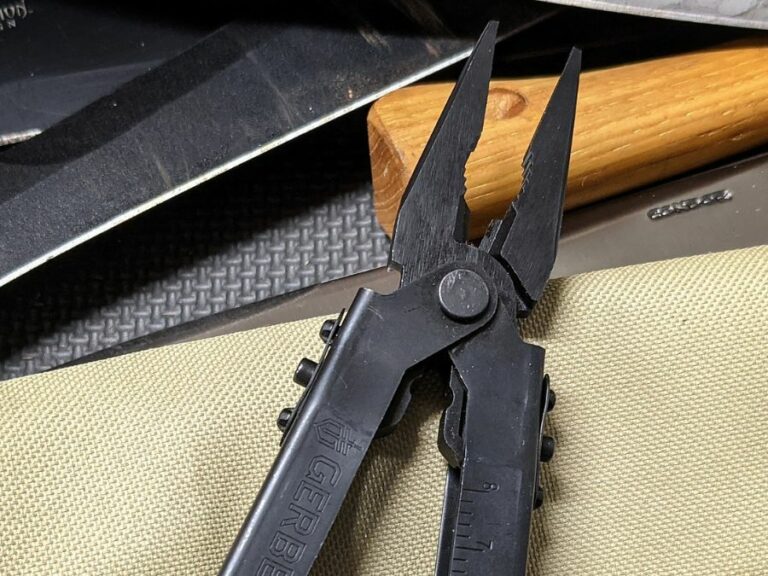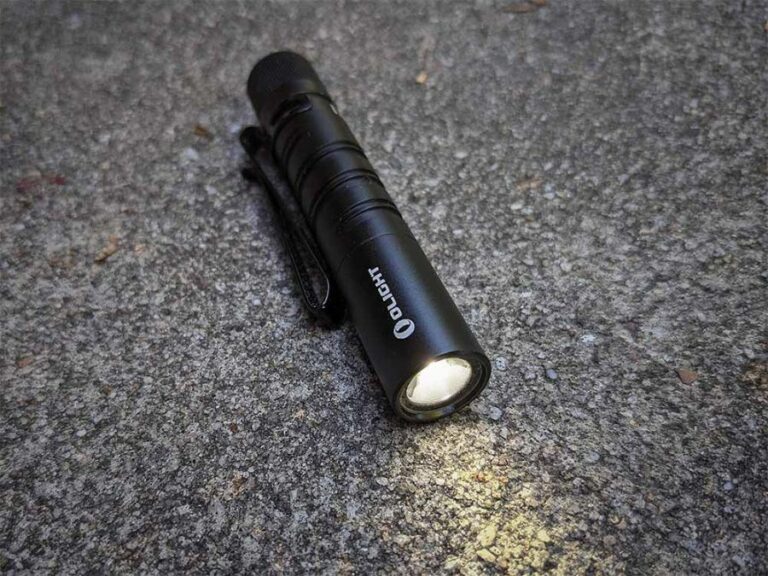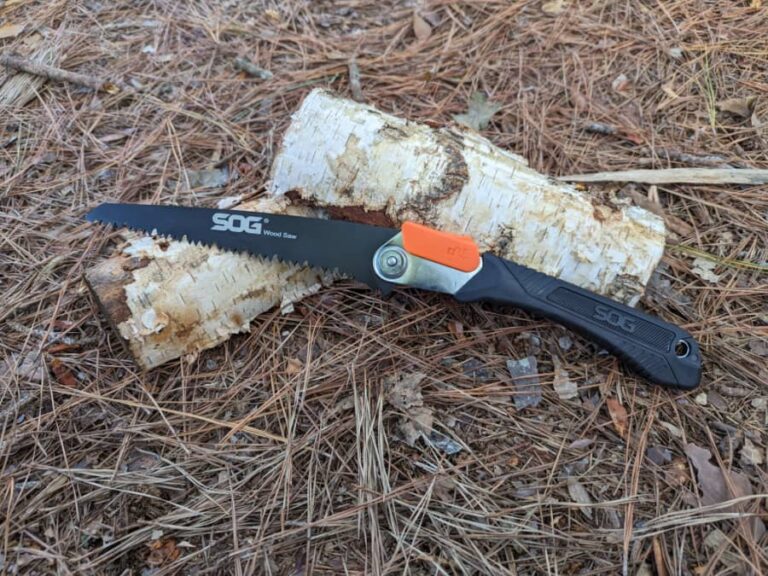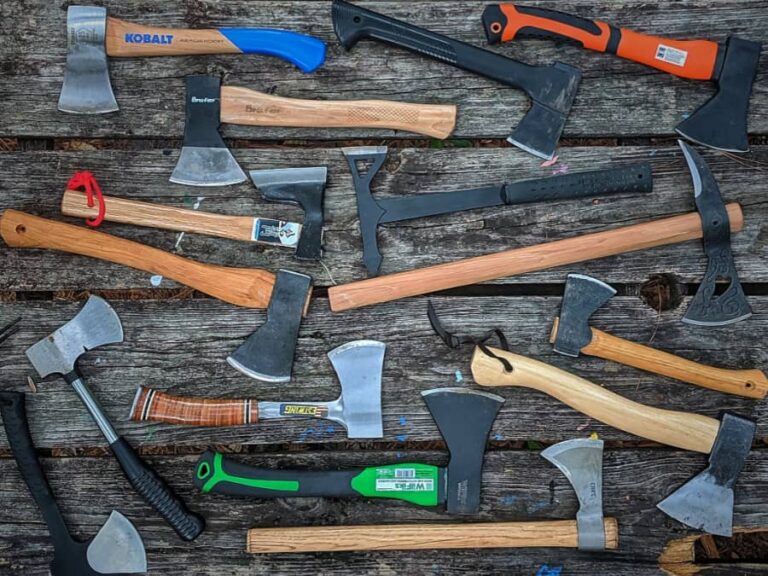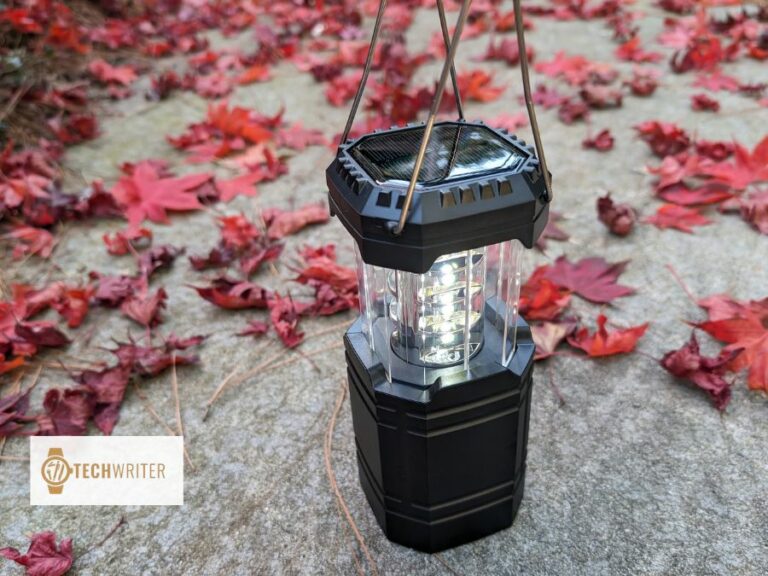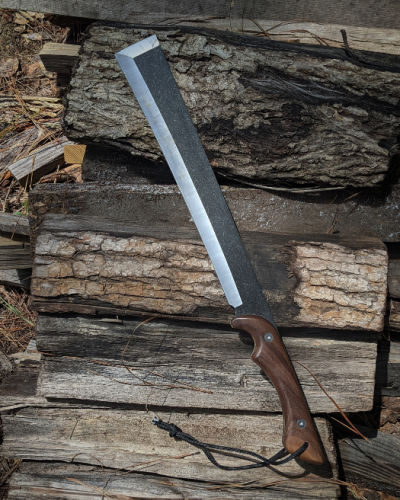Cold Steel Trench Hawk Survival Hatchet Review
The Cold Steel Trench Hawk surprised all of us! It looks a little extreme, but don’t let the looks fool you. It was a real performer. Plus, for the money it a great hatchet to pick up.
Today we’re taking a close look at the Trench Hawk Survival Hatchet from Cold Steel. This hatchet has an eye-catching design that got my attention the first time I saw it, and I’ve been eager to try one out for a while now.
Cold Steel is a Texas-based company that’s been making a pretty wide range of bladed weapons and tools since 1980. They have a few different axes and hatchets in their line, and the Trench Hawk—despite being described on Amazon and elsewhere as a ‘survival hatchet’—is one that clearly blurs the line between tool and weapon.
Read The Review Of The Cold Steel Kobun Tanto Here
Cold Steel Trench Hawk: First Impressions
My first thought upon opening up the package is that the word ‘hatchet’ doesn’t do this thing justice. We’re looking at a battleaxe here.
The Cold Steel Trench Hawk really looks like it means business. The head has a curved cutting edge that comes quite sharp (not sharp enough to shave with or anything, but definitely not dull). The wedge-style spike to the rear comes to a fine point. The hatchet comes with a Cold Steel Secure-Ex sheath made of hard plastic that covers the edge as well as the point.
The whole thing feels lightweight yet substantial (actual weight is 29 oz.). It seems well-balanced, and although I have some initial concerns about the plastic handle, I have to admit that the Trench Hawk certainly feels sturdy.
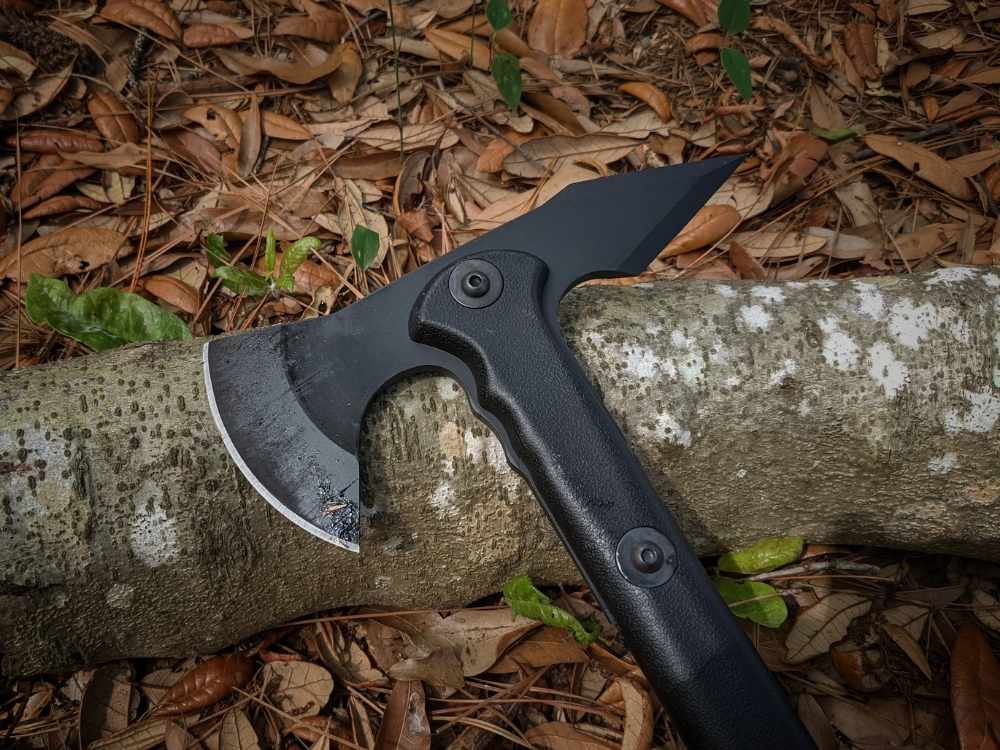
Hatchet Head Shape & Steel
Okay, we have to talk about the shape. Arguably the thing about the Trench Hawk that jumps out right away is the head shape, which includes a typical hatchet-like cutting edge, as well as an opposing spike. If it weren’t for the plastic handle, I’d say you could easily picture somebody in Lord of the Rings charging into battle with this thing.
It looks cool. But as always, my main question isn’t “does it look cool?” It’s “does it work?” Ultimately, I have to say the answer to that is a firm yes.
I’ll get into the nitty gritty of just how and why I find this hatchet to be useful a little further down the line. For now, I’ll just say that the blade is clearly well made, with a 3.5-inch cutting edge that flares outward significantly at the top and bottom. In axe-speak, you’d say it has quite a bit of beard to it.
The head is made of differentially hardened, drop forged 1055 carbon steel. This particular type of steel contains between 0.5% and 0.6% carbon, along with around 1.2% manganese and 0.4% silicon. Compared to the more popular 1095 steel, 1055 carbon steel is just a little bit softer.
I’d actually say that’s a good thing in a heavy-duty tool like an axe or machete. While it will need routine sharpening, 1055 steel is impact-resistant and very unlikely to chip or break. Like most carbon steels, it is not rust-resistant, and will need to be cared for accordingly.
If you’re really into axes and hatchets, check out American Axe by Brett McLeod
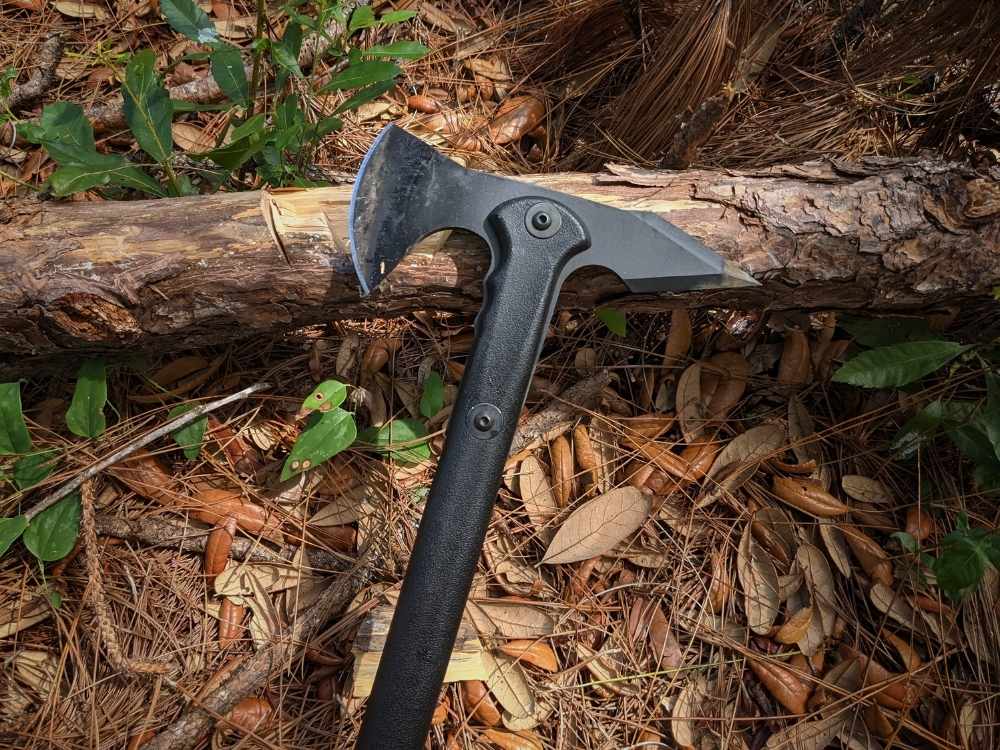
Handle & Construction
The handle of the Cold Steel Trench Hawk is made of polypropylene, a type of thermoplastic polymer that can be used to make a whole spectrum of different products. It measures 19 inches from end to end.
I often roll my eyes at axes and hatchets with plastic handles, until I actually use one and am reminded of all the advantages quality plastic has. First and foremost, it’s impact resistant. You can take a real swing with the Trench Hawk, and it absorbs shock very effectively. I think we’ve all had the experience of using an axe that wasn’t shock absorbent, and feeling the reverberations radiate all the way up to our shoulder. No such trouble with the Trench Hawk.
The polypropylene handle is also seemingly impossible to break. Understandably, it doesn’t have grain like wood does, so it won’t split on impact like a poorly made wooden hatchet handle might.
The head of the Trench Hawk is nested in the handle and is attached with two heavy-duty screws. In the event that the handle did need to be replaced, it would be fairly easy to separate it from the head using a hex key. Cold Steel sells replacement handles, which might come in handy someday.
My only minor quibble with the handle of the Cold Steel Trench Hawk is that it’s not quite as grippy as one might like. I’d consider wrapping the handle in some grip tape to make it a little more grabby.
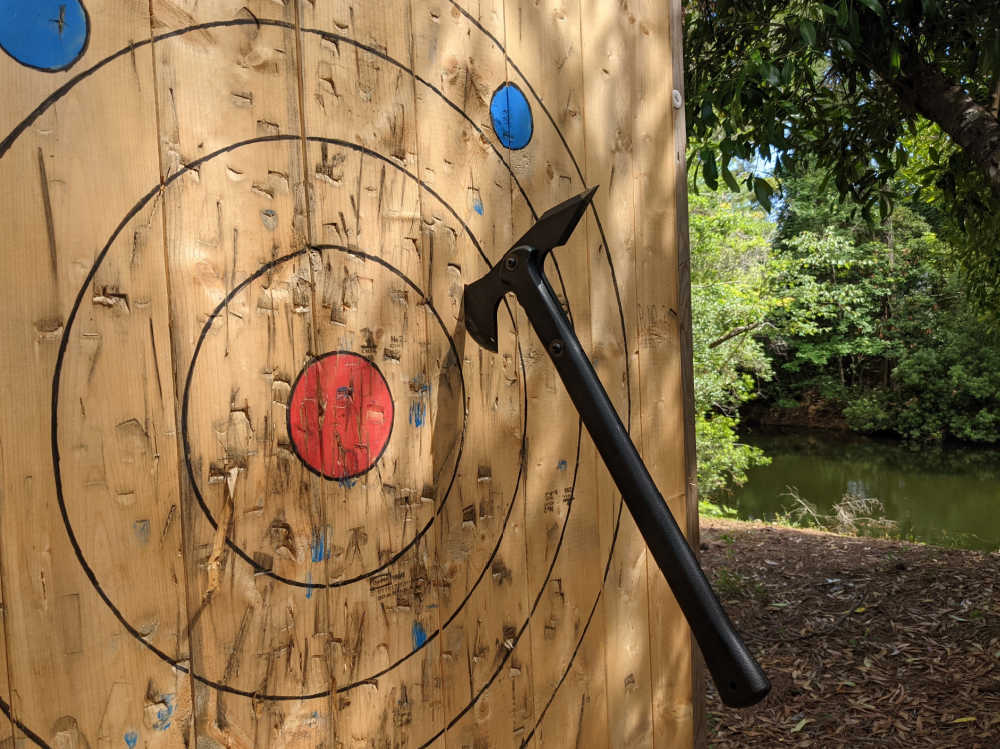
I just don’t know if the handle can take the abuse.
Who’s It For?
By now you’ve probably pickled up on the fact that I like the Trench Hawk. I think it’s a tough, well made hatchet. I can see it being useful in a wide range of scenarios, but the question I struggle to answer is “what is it best at?”
Or put it another way: of all the hatchets on the market, who should buy this one, and why? I have a few thoughts on how this hatchet functions for various tasks:
- Combat & Defense: Despite frequently being marketed as a survival hatchet, it seems pretty clear that Trench Hawk is designed to be a tactical hatchet. I don’t live the sort of lifestyle that leads one to get into frequent axe fights, but this thing’s applicability to combat is obvious. So if you’re looking for a hatchet that works well for self defense, this definitely makes the grade.
- Survival & Bushcraft: We all have our own preferences when it comes down to what we want to carry in a survival situation. For me, the Trench Hawk isn’t my first choice. It’s a bit bigger and bulkier than I’d prefer, and although the handle does have finger grooves close to the head, it’s a little cumbersome for fine tasks like shaving tinder. Personally, I’d rather carry a good machete, which is eisier to wield and can also be used for batoning wood (another thing the Trench Hawk, simply by nature of its design, cannot do).
- Throwing: I must say, the Trench Hawk throws very nicely. It’s well balanced, and even though I’m not the world’s best hatchet thrower, I managed to get mine to stick more often than not. So if you’re into axe throwing, I’d call this a good buy. Read about why axe throwing is so popular.
- Logging & Landscaping: For me, this is where the Cold Steel Trench Hawk really shines. It’s incredibly useful and versatile for yard work, chopping wood, and landscaping. Its size is intermediate between a typical hatchet and a typical axe, which makes it an able stand-in for both. It splits and chops like a champ. Even the wedge-style spike at the rear of the head is useful in this context; it’s a fantastic tool for digging up and chopping through troublesome roots.
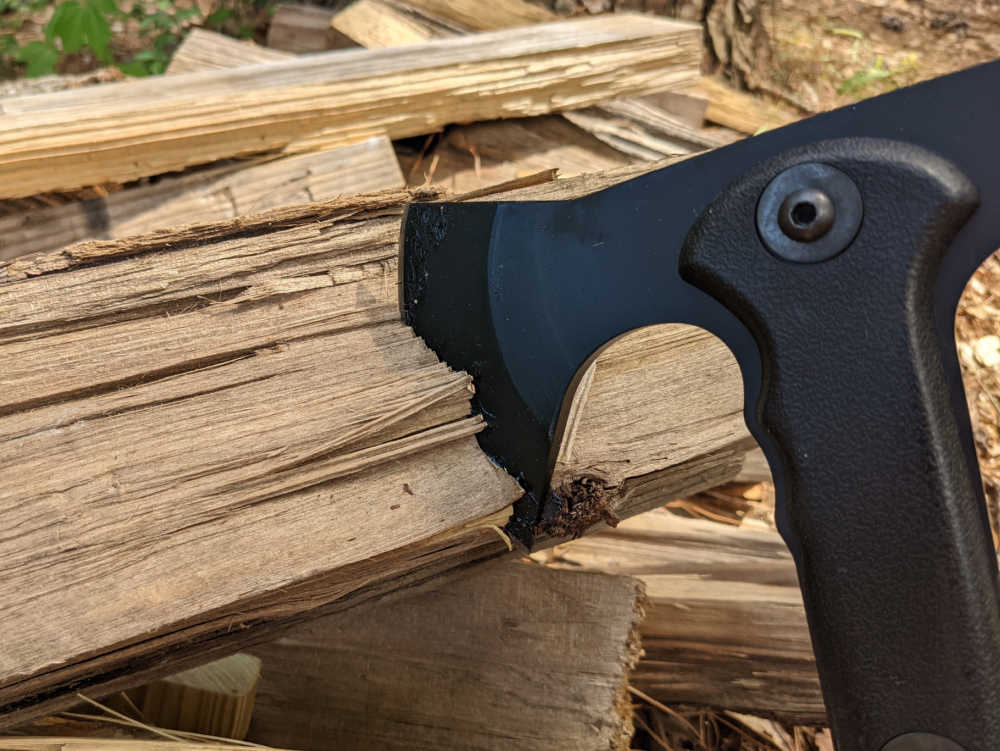
Final Thoughts on the Cold Steel Trench Hawk
The bottom line, for me, is that this is a good hatchet across the board, but it’s a great one in certain circumstances. It’s not going to become a go-to survival tool for me, but I predict that it’s going to come along on plenty of camping trips, and will be one of the go-to implements in my garden shed for quite some time.
There’s some kind of bush in my backyard that grows about two feet every month and keeps coming back no matter how many times I cut it to the ground… and the Trench Hawk is about to become its worst enemy.
Price-wise, the Trench Hawk could be a great buy if you can snag one at the right time. As I’m writing this, it’s going for $67.99 on Cold Steel’s website, but you can pick it up on Blade HQ for less. Honestly, if you manage to get your hands on one of these for less than $50, that feels like a really solid value.

Alan Dale is an experienced backpacker and adventure sports athlete who pays the bills by writing. Married with a small brood, Alan often has his kids in tow on many of his adventures. You can visit Alan here: https://siralandale.com/

